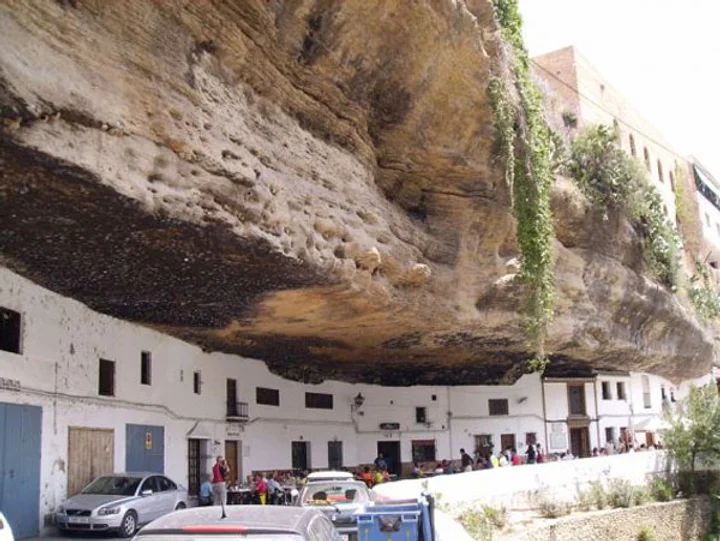By: Jingwei Zhao
Have you ever wondered what any ideal living conditions would be like? For you, it could be an apartment in a bustling city like New York or a flat suburban area with friendly neighbors. However, I bet you would not have thought of living under a rock! In the town of Setenil de Ias Bodegas, many of the 3,000 residents found themselves living inside houses built inside rock formations of a slim gorge in the Rio Trejo River. When you first look at this town, it might seem like the houses are growing like moss under giant stones. This may sound strange to you, so let us first look at how they began, starting with their origin as an ancient tradition.
The town’s unique architecture may have been inspired by the Arabians, who used to dwell in cool and shady caves that protected them from the sun and its burning temperatures. Way back during the twelfth century, Moors arrived at the area that would become Las Bodegas, and settled into the naturally formed caves. Over time, they slowly started to add walls, and the town was formed. were the ones who originally founded the town. It turns out, the moors were onto something. These rocky roofs are still earthquake-resistant and fireproof to this day! They also slightly extend a bit out from the houses to the roads, which helps provide passersby with some extra shade.
The name of the town gives even more insight into its history. “Setenil” is a Latin phrase that is derived from the phrase “Setenil nihil,” which translates to “seven times nothing.” When the Moors first took the territory from the Catholic Spanish rulers, their opponents took seven attempts to reconquer the land, and they finally succeeded on the seventh try. The other part of the name “Bodegas” initially meant “storehouse for wine,” but now it is commonly used to describe small Hispanic grocery stores located in urban areas. However, this part was only added in after Christian settlers brought vineyards to the area during the fifteenth century.
Unfortunately for the residents, in the eighteenth century, many of the vineyards that were planted were destroyed by an insect invasion, but to this day, the town is still well known for its fine and delicious olives and almonds. A few of their other assets also include some of the best meat, such as chorizo sausage and cerdo (pork). Their pastries have a reputation for how fine they are, and the restaurants and bars are some of the bests in the region. The design of these houses innovated the idea of roof protection, and this spectacle of a town is also a tourist attraction, in which its many wonders make it an incredible place to visit.











